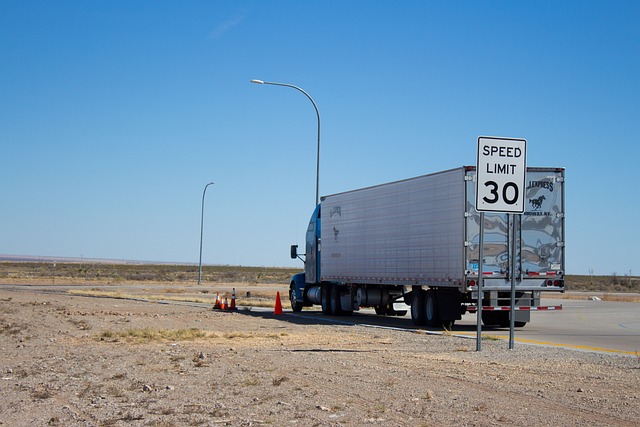Building Long-Term Resilience with Affordable Physical Damage Insurance

Building long-term financial resilience requires focusing on physical damage insurance as a key comp…….
Affordable Policies for New Fleets: A Pathway to Sustainable Transportation
Introduction
In the ever-evolving landscape of transportation, the advent of new fleets presents a unique challenge and opportunity. The concept of “Affordable Policies for New Fleets” (APNF) emerges as a critical element in ensuring that these fleets are not only cost-effective but also contribute to sustainable and efficient transportation systems globally. This article delves into the multifaceted aspects of APNF, exploring its significance, global impact, economic considerations, technological advancements, policy frameworks, challenges, case studies, and future prospects. Readers will gain a comprehensive understanding of how APNF can be effectively implemented to optimize fleet management, reduce operational costs, and promote environmental sustainability.
Understanding Affordable Policies for New Fleets
APNF encompasses a suite of strategies designed to make the transition to new fleets accessible and beneficial for businesses and the broader community. These policies address key components such as vehicle acquisition, maintenance, fueling, and operational costs. Historically, the transportation sector has been a significant contributor to greenhouse gas emissions, making the implementation of APNF all the more critical in mitigating climate change impacts. The affordability aspect ensures that small and medium-sized enterprises (SMEs) and startups can also adopt cleaner technologies without incurring prohibitive costs.
Global Impact and Trends
The influence of APNF extends beyond national borders, as the global transportation sector grapples with the need for sustainable practices. Key trends shaping this trajectory include the increasing adoption of electric vehicles (EVs), the integration of smart technologies, and the rise of mobility-as-a-service (MaaS) platforms. Different regions are responding to these trends in various ways, with some leading in EV infrastructure development while others focus on policy innovation to encourage fleet modernization.
Economic Considerations
Economically, APNF plays a pivotal role in market dynamics and investment patterns. By providing incentives and subsidies for cleaner technologies, governments can stimulate economic growth, create jobs, and foster innovation. The policies also impact economic systems by encouraging competition and driving down costs through economies of scale. A balanced approach to APNF can lead to a win-win scenario where the economy grows, and environmental goals are achieved.
Technological Advancements
Technology has been a game-changer in the realm of fleet management. Innovations such as telematics, autonomous vehicles, and advanced battery technologies have significantly reduced operational costs and increased efficiency. These advancements not only lower the total cost of ownership but also pave the way for more sustainable practices. As technology continues to evolve, APNF must adapt to integrate these innovations effectively.
Policy and Regulation
The regulatory framework governing new fleets is complex and varies by region. Key policies include emissions standards, incentives for low-emission vehicles, and mandates for alternative fuels. These regulations not only shape the market but also guide fleet operators in making informed decisions. Understanding the legislative landscape is crucial for the successful implementation of APNF.
Challenges and Criticisms
Despite its potential benefits, APNF faces several challenges and criticisms. These include technological barriers, high initial costs, infrastructure limitations, and resistance to change from established industries. To address these issues, stakeholders must collaborate to develop strategies that overcome these obstacles, such as public-private partnerships, targeted research and development, and comprehensive education programs.
Case Studies
Several case studies demonstrate the successful application of APNF. For instance, a city in Scandinavia transitioned its public transportation fleet to electric buses, significantly reducing emissions and operational costs. Another case involves an international logistics company that adopted a fleet management software, which optimized routes and reduced fuel consumption. These success stories provide valuable insights and lessons for other regions and sectors looking to implement similar policies.
Future Prospects
The future of APNF is bright, with potential growth areas including the expansion of EV charging infrastructure, advancements in battery technology, and the integration of artificial intelligence in fleet management. Emerging trends such as the circular economy and shared mobility models will also shape the trajectory of new fleets. Strategic considerations for policymakers include ensuring equitable access to technology, fostering innovation, and preparing the workforce for the changes ahead.
Conclusion
In conclusion, APNF represents a vital component in the transition to more sustainable transportation systems. By addressing affordability, integrating technological advancements, and aligning with policy frameworks, new fleets can significantly reduce their environmental footprint while also providing economic benefits. The lessons from case studies and the insights into future prospects underscore the importance of APNF in shaping a greener, more efficient transportation landscape.
FAQ Section
What are “Affordable Policies for New Fleets”?
These are strategies aimed at making the transition to new, sustainable fleets cost-effective and accessible for businesses of all sizes.
Why is affordability a key aspect of these policies?
Affordability ensures that small and medium-sized enterprises can also invest in cleaner technologies without financial strain.
How do technological advancements impact APNF?
Technological advancements reduce operational costs, increase efficiency, and enable the adoption of more sustainable practices within new fleets.
What role do governments play in implementing APNF?
Governments provide incentives, set emissions standards, and establish infrastructure for cleaner technologies through policy and regulation.
Can you give examples of successful APNF implementations?
Yes, one example is a Scandinavian city that transitioned its public transportation to electric buses, resulting in reduced emissions and operational costs. Another example is an international logistics company that adopted fleet management software to optimize routes and reduce fuel consumption.
What are the main challenges facing APNF?
The main challenges include overcoming technological barriers, addressing high initial costs, expanding infrastructure, and resisting change from established industries.
What is the outlook for APNF in the future?
The outlook for APNF is positive, with potential growth areas that focus on innovation, infrastructure development, and the adoption of sustainable practices in fleet management.

Building long-term financial resilience requires focusing on physical damage insurance as a key comp…….

Claims management is a critical component of business risk mitigation, impacting financial stability…….

Small fleet liability insurance is a crucial tool for businesses managing limited vehicles, protecti…….

The startup ecosystem presents unique challenges for both startups and insurers due to dynamic innov…….

Small fleet operations face diverse challenges in providing adequate cargo protection, requiring tai…….

New fleet owners face a significant challenge balancing comprehensive insurance protection with cost…….

Multi-truck insurance plans offer businesses operating large fleets tailored risk management solutio…….

Securing small fleet liability insurance is challenging due to limited historical data for smaller o…….